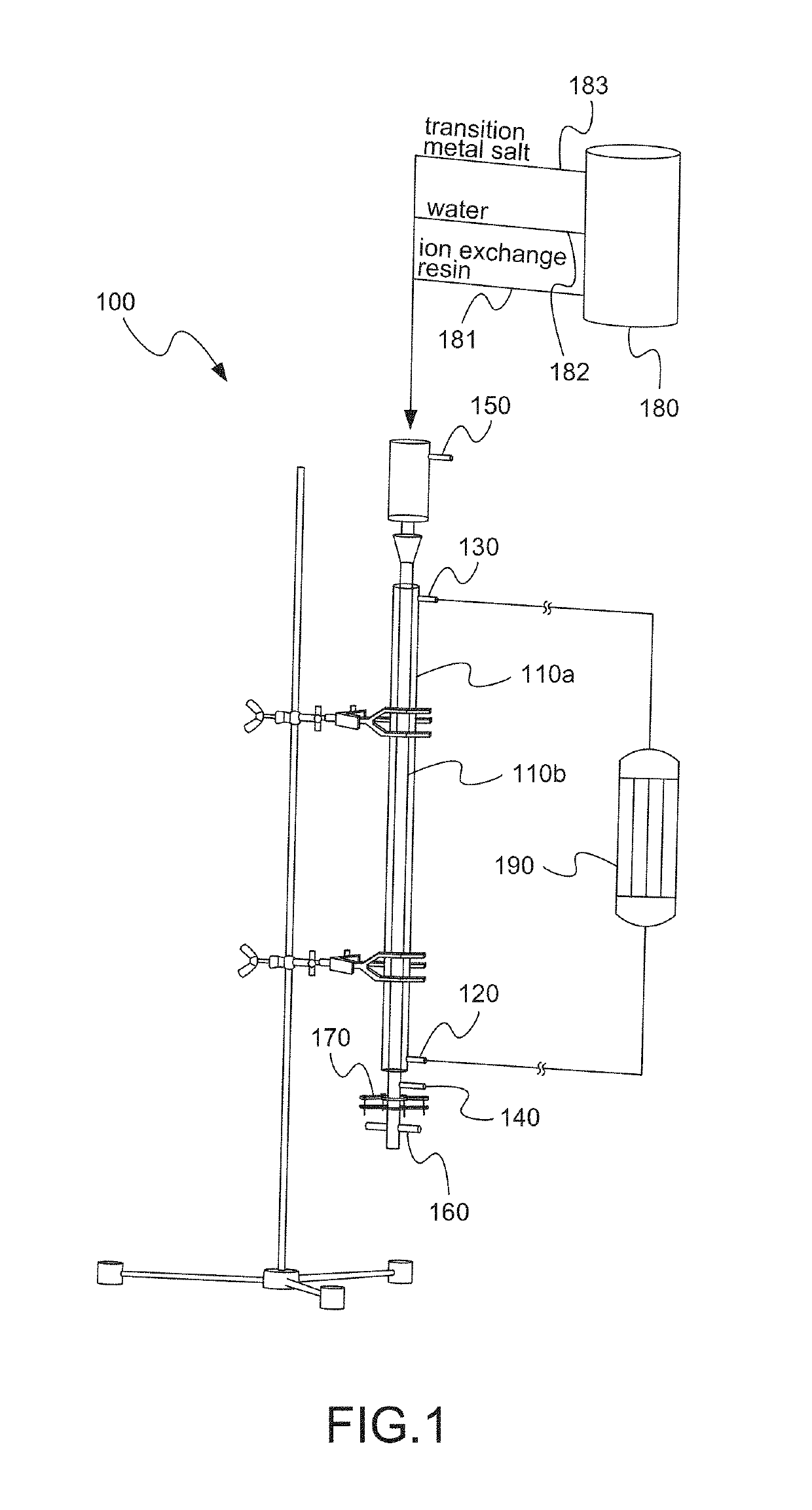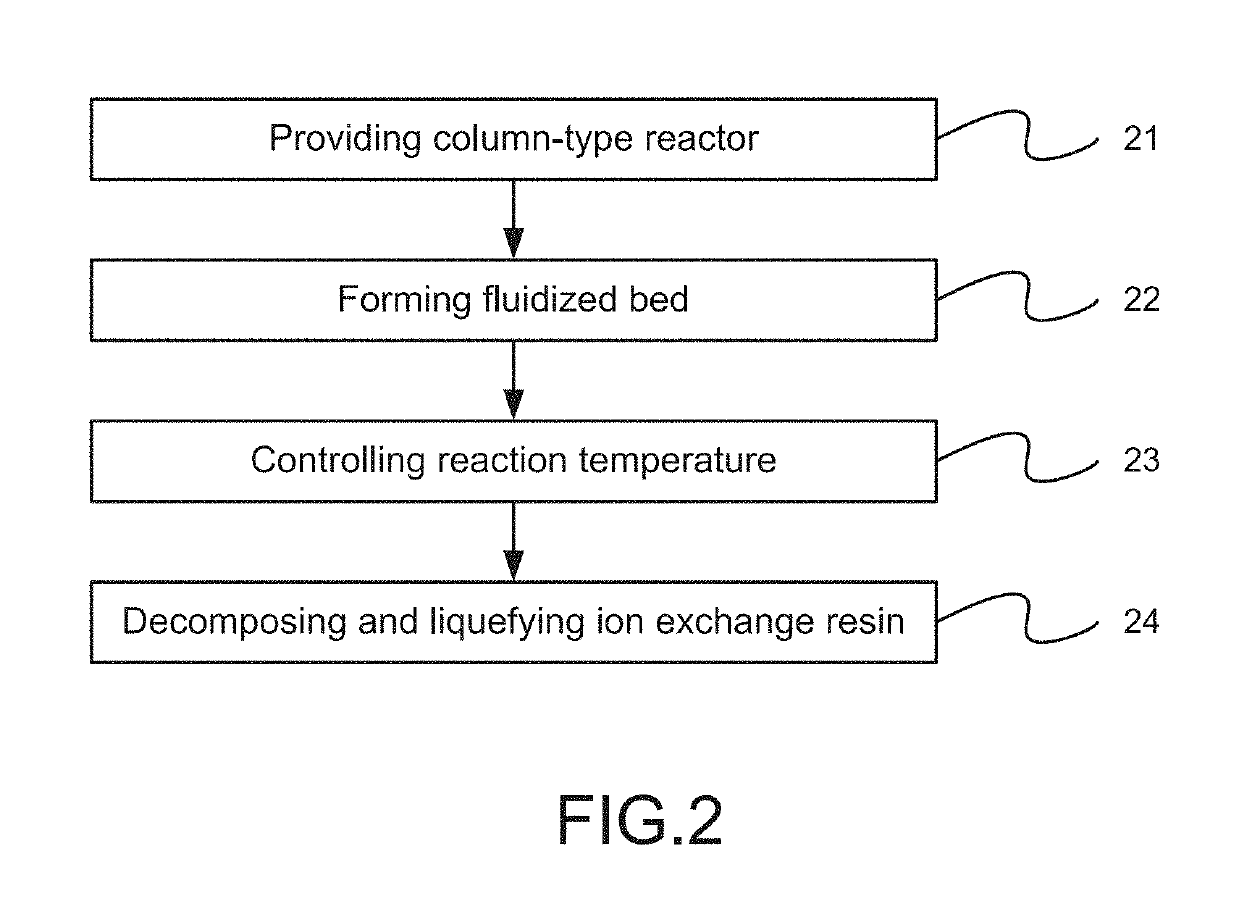Method for oxidative degradation of ion exchange resin
a technology of ion exchange resin and oxidative degradation, which is applied in the direction of ion exchanger modification/after-treatment, radioactive decontamination, nuclear engineering, etc., can solve the problems of low compressive strength, unstable resin, and swelling with water absorbed, so as to maintain the reaction speed, easy to control, and high efficiency
- Summary
- Abstract
- Description
- Claims
- Application Information
AI Technical Summary
Benefits of technology
Problems solved by technology
Method used
Image
Examples
Embodiment Construction
[0014]The following description of the preferred embodiment is provided to understand the features and the structures of the present invention.
[0015]Please refer to FIG. 1 and FIG. 2, which are a view showing a device used for a preferred embodiment according to the present invention; and a flow view showing the preferred embodiment. As shown in the figures, the present invention is a method for oxidative degradation of an ion exchange resin, where waste of ion exchange resin is treated through oxidative deactivation in a form of a fluidized bed. The present invention comprises the following steps:
[0016](a) Providing column-type reactor 21: A column-type reactor is provided. The column-type reactor is a two-sheath column-type reactor 100 having an outer column 110a and an inner column 110b inside the outer column 110a. The outer column 110a has a cooling water inlet 120 and a cooling water outlet 130. The inner column 110b has a reflux inlet 140, a reflux outlet 150, an oxidant inle...
PUM
 Login to View More
Login to View More Abstract
Description
Claims
Application Information
 Login to View More
Login to View More - R&D
- Intellectual Property
- Life Sciences
- Materials
- Tech Scout
- Unparalleled Data Quality
- Higher Quality Content
- 60% Fewer Hallucinations
Browse by: Latest US Patents, China's latest patents, Technical Efficacy Thesaurus, Application Domain, Technology Topic, Popular Technical Reports.
© 2025 PatSnap. All rights reserved.Legal|Privacy policy|Modern Slavery Act Transparency Statement|Sitemap|About US| Contact US: help@patsnap.com


